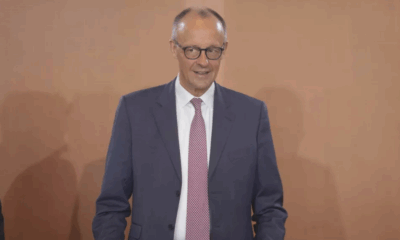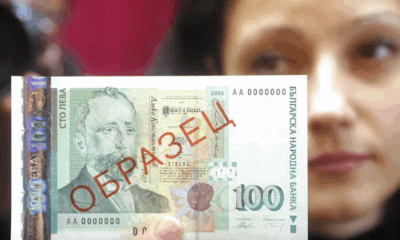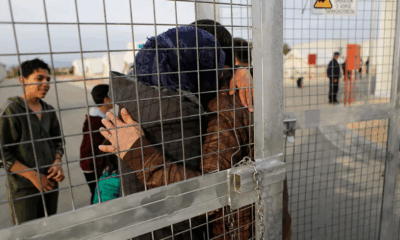News
Europe’s Housing Crisis Worsens, Young Spaniards Struggle to Enter Market
Europe’s housing crisis continues to escalate, with soaring property prices and a lack of affordable housing making it increasingly difficult for young people to enter the market—particularly in Spain, where residents in major cities are being priced out.
Rising Housing Costs Across the EU
Affordable housing has become a pressing issue across the EU, with one in 10 households in major cities spending more than 40% of their income on rent, according to the latest Eurostat data. This figure drops to 7% in rural areas. A combination of rising property prices, limited housing supply, and the expansion of tourist rentals is making access to housing more challenging, especially for young people.
Between 2010 and the third quarter of 2024, house prices in the EU surged by 54%, while rents increased by 26%. Estonia and Lithuania experienced the steepest increases, whereas Italy saw house prices decline, and Greece was the only country where rent prices fell.
Spain Faces a Severe Housing Crunch
Spain has been particularly affected, with rental prices soaring by 11.5% in 2024, according to property website Idealista. December marked a record high, with average rental prices reaching €13.5 per square meter.
“In Madrid, housing prices have surged by 20% in the past year for purchases and 15.4% for rentals,” said Quique Villalobos, a spokesperson for urban planning and housing at the Federation of Neighbourhood Associations of Madrid.
In the city centre, rents have jumped by 21%, with few properties available for less than €2,000 per month. In nearby metropolitan areas, three-bedroom apartments now command between €1,200 and €1,500 per month.
Barcelona faces a similar crisis, with the booming short-term rental market playing a key role in driving up costs.
Young People Struggling the Most
The housing crisis has hit young people particularly hard. On average, Europeans leave their parental homes at 26.3 years old, but in Spain, that figure rises to 30.4—one of the highest in the EU.
“Housing is responsible for 70% of inequality in Spain,” said Víctor Camino, a Socialist Party (PSOE) lawmaker. “Thousands of young people spend up to 70% of their salary on rent or mortgage payments.”
Paula de las Heras, a lawmaker from the opposition People’s Party (PP), noted that young people have been struggling for over a decade due to stagnant wages and limited savings. The upfront cost of homeownership, requiring €20,000–40,000 in initial investment, remains out of reach for many.
Political Divide Over Housing Solutions
Spain’s government, led by PSOE, is enforcing a new Housing Law that includes rent caps in high-cost areas. Camino pointed out that while rent prices have declined in Catalonia, they have continued to rise in Madrid, where local authorities have refused to implement the law.
De las Heras defended Madrid’s approach, emphasizing initiatives to expand affordable rental housing and help young buyers enter the market.
Villalobos argued that increasing public housing supply is key, calling for government investment to raise Madrid’s public housing share from 1% to 9%. He also advocated for taxing vacant homes and banning evictions without alternatives.
A Widespread Challenge Across the EU
Europe’s housing crisis is not confined to Spain—it is a structural problem affecting the entire bloc. Recognizing adequate housing as a fundamental right, the European Parliament passed a resolution in 2021 calling for stronger protections. In 2024, European Commission President Ursula von der Leyen prioritized housing policy, leading to the creation of a special committee to propose solutions by 2025.
As policymakers seek solutions, millions of young Europeans face an uncertain future in an increasingly unaffordable market. Camino stressed the need for coordinated political action, warning against a society divided between wealthy property owners and struggling tenants.
News
Two Dead, Nearly 200 Injured as PSG Title Celebrations Turn Violent Across France

What began as jubilant celebrations of Paris Saint-Germain’s historic UEFA Champions League victory ended in violence and tragedy in parts of France, with two people killed and nearly 200 injured during street festivities that spiraled out of control.
Authorities confirmed on Sunday that a 17-year-old boy was fatally stabbed in the southwestern town of Dax during a PSG street gathering, while in Paris, a man died after his scooter was struck by a car amid the crowded celebrations. Both incidents are currently under investigation.
The unrest followed PSG’s dramatic win in Munich, where the club secured its first-ever Champions League title, marking a milestone in French football history. While fans across the country took to the streets to celebrate, several areas descended into violence.
According to the French Interior Ministry, a total of 294 people were arrested nationwide as of 2 a.m. Sunday. Of the nearly 200 injured, 21 were police officers—18 of them in Paris alone. One officer remains in a medically induced coma after being struck in the face by a firework.
Interior Minister Bruno Retailleau condemned the violence in a statement on social media. “True PSG fans are celebrating a magnificent achievement. Meanwhile, barbarians have taken to the streets to commit crimes and provoke law enforcement,” he said. “It is unacceptable that people cannot celebrate without being endangered by a violent minority.”
Despite the unrest, the majority of gatherings were peaceful, authorities noted, with large crowds celebrating the historic win in cities including Marseille, Lyon, and Lille.
The PSG squad returned to Paris from Munich on Sunday afternoon aboard a Qatar Airways charter flight, arriving at 4 p.m. The team is expected to continue celebrations in the capital with tens of thousands of fans, under heightened security measures.
The violent turn of events has reignited debate in France over crowd control during major sporting celebrations, and how best to ensure public safety without dampening national enthusiasm.
PSG’s Champions League triumph marks a defining moment for the club, which has long pursued European glory. As the team prepares for a hero’s welcome, officials are urging fans to celebrate responsibly and respect public safety.
News
Ukraine Launches Major Drone Assault on Russian Airfields, Hits Over 40 Strategic Bombers

Ukraine’s Security Service (SBU) has claimed responsibility for a large-scale drone strike on four Russian air bases over the weekend, targeting dozens of strategic bombers across vast swaths of Russian territory — from Siberia to the Arctic.
According to Ukrainian officials, the operation, codenamed “Spiderweb” (Pavutyna), was launched on June 1 and struck 41 long-range bombers stationed at airfields in Russia’s Ryazan, Ivanovo, Irkutsk, and Murmansk regions. The attack is being hailed by Kyiv as one of its most ambitious and far-reaching strikes since the beginning of Russia’s full-scale invasion.
“Enemy strategic bombers are burning en masse in Russia,” a senior SBU official said, noting that the operation was specifically designed to cripple Moscow’s airstrike capabilities. “This is a large-scale special operation aimed at destroying enemy bomber aircraft.”
The four airfields targeted were Dyagilevo in the Ryazan region, Ivanovo in central Russia, Belaya air base in Irkutsk — over 4,000 kilometers from the front lines — and Olenya air base on the Kola Peninsula near the Arctic, roughly 2,000 kilometers from Ukraine’s border.
Ukrainian officials described the complex logistics of the operation, which involved covertly transporting drones deep into Russian territory, hiding them until the time of launch, and remotely executing the strikes. While specific details remain classified, Ukraine previously revealed it had developed drones with a flight range of up to 3,000 kilometers, enabling long-range operations like this.
Satellite imagery analyzed after the attack shows the presence of several high-value Russian aircraft types at the affected bases, including the Tu-95, Tu-22M3, Tu-160, and A-50 radar planes. These aircraft have been central to Russia’s long-range missile campaign against Ukraine.
The Tu-22M3, for example, is capable of carrying Kh-22 and Kh-32 cruise missiles at speeds exceeding Mach 4. The Tu-95, a Cold War-era bomber once designed to carry nuclear weapons, has been retrofitted to launch conventional cruise missiles. The A-50 aircraft provides airborne radar surveillance and target coordination for Russian forces.
The scale of the strike underscores Ukraine’s growing long-range capabilities and signals a shift in Kyiv’s strategy to disrupt Russian air operations at their source. President Volodymyr Zelenskyy said he had held meetings with the Ministries of Defense and Foreign Affairs, along with the General Staff and SBU, to coordinate further defense and counter-offensive planning.
There has been no immediate official response from Moscow regarding the extent of damage caused.
News
German Chancellor Merz to Meet President Trump in Washington Amid Global Tensions
-

 Business1 year ago
Business1 year agoSaudi Arabia’s Model for Sustainable Aviation Practices
-

 Business1 year ago
Business1 year agoRecent Developments in Small Business Taxes
-

 Politics1 year ago
Politics1 year agoWho was Ebrahim Raisi and his status in Iranian Politics?
-

 Business11 months ago
Business11 months agoCarrectly: Revolutionizing Car Care in Chicago
-

 Business11 months ago
Business11 months agoSaudi Arabia: Foreign Direct Investment Rises by 5.6% in Q1
-

 Technology1 year ago
Technology1 year agoComparing Apple Vision Pro and Meta Quest 3
-

 Politics1 year ago
Politics1 year agoIndonesia and Malaysia Call for Israel’s Compliance with ICJ Ruling on Gaza Offensive
-

 Sports10 months ago
Sports10 months agoKeely Hodgkinson Wins Britain’s First Athletics Gold at Paris Olympics in 800m






























